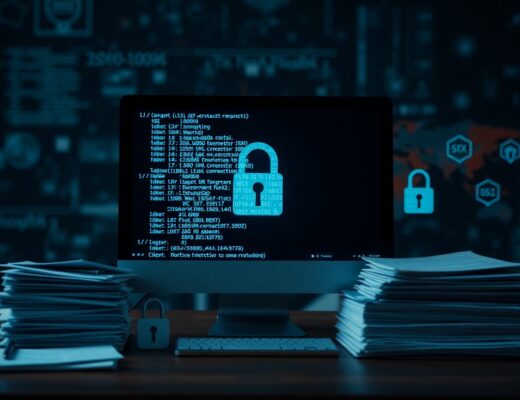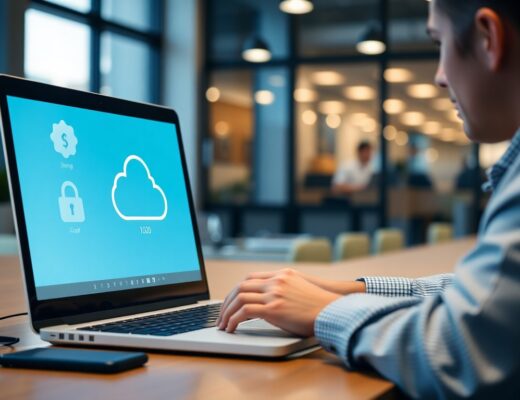This guide will help you understand and implement effective strategies to shield your business from ransomware attacks. With the increasing prevalence of cyber threats, it is vital that you prioritize cybersecurity measures to safeguard your sensitive data and assets. You will learn key practices, tools, and tips that can significantly reduce the risk of falling victim to these malicious attacks. By taking proactive steps, you can ensure the resilience and security of your business in today’s digital landscape.
Understanding Ransomware
To effectively safeguard your business, it’s imperative to understand ransomware—one of the most notorious types of cyber threats. Ransomware is malicious software designed to encrypt your files or block access to your system until a ransom is paid. Being aware of its nature allows you to implement preventive measures and save your vital data from potential harm.
What is Ransomware?
There’s a significant shift in how cybercriminals operate, with ransomware being a primary tool for extortion. By infiltrating your systems, this malware holds your data hostage, demanding payment for its release. Ransomware attacks can lead to devastating operational disruptions and financial losses if not handled promptly and correctly.
Types of Ransomware
Ransomware can be categorized into various types, each with unique characteristics and strategies. Understanding these can help you identify vulnerabilities in your system. Here are some common types:
- Crypto Ransomware
- Locker Ransomware
- Doxware
- Scareware
- Ransomware-as-a-Service (RaaS)
Knowing the differences between these types can help you better prepare and defend your business against potential threats.
| Type of Ransomware | Description |
|---|---|
| Crypto Ransomware | Encrypts files to render them inaccessible. |
| Locker Ransomware | Locks users out of their devices entirely. |
| Doxware | Threatens to release sensitive information. |
| Scareware | Uses fake alerts to instill fear. |
| Ransomware-as-a-Service (RaaS) | Offers ransomware kits for less experienced attackers. |
Ransomware attacks not only compromise your data but can also lead to long-term reputational damage. To mitigate these risks, consider the different types of ransomware listed above:
- Educate your employees on how to recognize phishing attempts.
- Implement robust data backup solutions regularly.
- Maintain updated security software to detect threats.
- Regularly train your team on best cyber hygiene practices.
- Assess vulnerabilities in your existing IT infrastructure.
Knowing how to protect yourself against these varied threats enhances your security posture and reduces the risk of a successful attack.
Factors Contributing to Ransomware Attacks
Any business can fall prey to ransomware attacks, but certain factors may increase your vulnerability. Key contributors include:
- Insufficient employee training
- Weak security policies
- Lack of regular system backups
- Outdated software and hardware
- Over-reliance on single layers of protection
Recognizing these factors is imperative for strengthening your defenses against potential threats.
Human Error
Any organization must recognize that human error is a significant factor in ransomware attacks. Inadequate training or awareness can lead employees to unintentionally compromise security, such as clicking on malicious links or downloading harmful attachments.
Outdated Systems
With technology constantly evolving, maintaining outdated systems can expose your business to various threats, including ransomware. Old software may lack critical updates and security patches that protect against known vulnerabilities, making your systems attractive targets for attackers.
Understanding the risks associated with outdated systems is imperative for fortifying your cybersecurity. Regularly updating your software and hardware ensures that you take advantage of the latest security measures available. Outdated systems not only increase the likelihood of a successful attack but can also lead to prolonged recovery times and more substantial financial losses. Prioritize a consistent schedule for software updates and replacements to optimize your security framework.
How to Develop a Ransomware Protection Strategy
Some businesses overlook the importance of a comprehensive ransomware protection strategy. To effectively shield your organization from potential threats, you must assess your current security posture, identify vulnerabilities, and implement best practices tailored to your unique environment. This strategy should encompass regular software updates, employee training, and a robust backup plan to create layered defenses against ransomware attacks.
Regular Software Updates
Updates to your software and systems are vital in protecting your business from ransomware threats. By regularly applying patches and updates, you eliminate vulnerabilities that attackers may exploit. Set a schedule for automatic updates where possible, and ensure that all applications and operating systems across your network remain current to significantly reduce the risk of infection.
Employee Training and Awareness
For your business to effectively combat ransomware, investing in employee training and awareness is key. Your staff are often the first line of defense against malicious threats, and equipping them with the knowledge to recognize phishing emails and other potential risks can help prevent attacks before they happen.
Understanding the human element in cybersecurity is vital for enhancing your protection strategy. Regular training sessions, simulated phishing exercises, and offering resources on identifying malicious activities can empower your employees to act as vigilant protectors. Fostering a culture of security awareness not only mitigates risk but also reinforces the importance of every team member’s role in safeguarding your organization against ransomware attacks.
Tips for Effective Data Backup
Unlike traditional backup methods, adopting a multi-layered approach can significantly enhance your data security. Here are some important tips to ensure effective data backup:
- Use automated backup systems.
- Verify your backups regularly.
- Maintain both onsite and offsite copies.
- Encrypt your backup data.
- Test data restoration procedures periodically.
Thou should consistently evaluate and refine your backup strategy based on emerging threats.
Backup Frequency
An effective backup schedule should align with the frequency of your data changes. Depending on your business operations, consider performing daily backups for critical data and weekly backups for less critical information. This practice minimizes the risk of data loss, ensuring your business continuity in case of ransomware attacks.
Secure Storage Options
If you want to adequately safeguard your backup data, explore secure storage options, both physical and cloud-based. Implementing these solutions helps ensure that your backups remain protected from unauthorized access and potential threats.
Data should be stored in secure environments that incorporate strong encryption and access controls. Consider using reputable cloud service providers known for their high-security standards. Additionally, supplement cloud storage with external hard drives or dedicated offline systems that are disconnected from your network. By diversifying storage solutions, you reduce the chances of losing your backups to ransomware or other unforeseen events.
Implementing Strong Security Measures
Your approach to cybersecurity can greatly impact your business’s resilience against ransomware attacks. By investing in strong security measures, you create layers of protection that effectively reduce vulnerabilities. Prioritize security protocols that suit your organization’s specific needs, ensuring that you are not an easy target for cybercriminals.
Firewalls and Antivirus Software
There’s no substitute for robust firewalls and reliable antivirus software in safeguarding your business. Firewalls act as barriers against unauthorized access, while antivirus software detects and removes malicious programs. Keeping these systems updated and configured correctly can significantly reduce the risk of ransomware infiltrating your network.
Multi-Factor Authentication
While it may seem like an extra step, multi-factor authentication adds a significant layer of security to your systems. This method requires users to provide two or more verification factors to access accounts, which can include something they know (password), something they have (a smartphone), or something they are (biometrics). By implementing multi-factor authentication, you make it much more difficult for attackers to breach your systems, even if they have obtained a user’s password.
Security enhances your operational integrity by mitigating the risks associated with unauthorized access. Multi-factor authentication not only protects sensitive information but also bolsters user accountability. By requiring multiple forms of verification, you minimize the likelihood of successful attacks, ensuring that even if one layer is compromised, your data remains secure. As cyber threats continue to evolve, incorporating this additional measure is a proactive strategy that fortifies your overall defense against ransomware attacks.
How to Respond to a Ransomware Attack
Despite taking preventive measures, you may still fall victim to a ransomware attack. The key is to act swiftly and effectively. First, isolate and contain the infected systems to prevent further spread. Next, assess the damage and determine whether you have backups available to restore your data. If you are unable to recover data independently, consider contacting cybersecurity professionals who can guide you through the recovery process.
Incident Response Plan
To effectively manage a ransomware attack, develop an incident response plan that outlines clear steps for identification, containment, eradication, and recovery. This plan should include designated roles for your team members, ensuring everyone knows their responsibilities during an attack. Regularly review and update the plan to adapt to evolving threats and improve your response strategies.
Communication Protocols
You need to establish communication protocols that address both internal and external messaging during a ransomware incident. Ensure that all employees understand their roles in communicating about the attack and that sensitive information is handled carefully to avoid escalation of the situation.
Understanding the importance of communication during a ransomware attack can significantly influence your response. Develop a clear framework for how information is shared within your organization and how you engage with stakeholders, including clients, partners, and law enforcement. Transparency is key; keeping everyone informed about the status of the situation can reduce panic and maintain trust. Be sure to designate a spokesperson to avoid mixed messages and ensure that all communications are consistent and strategic.
Final Words
Drawing together the vital strategies discussed, safeguarding your business from ransomware attacks requires a proactive approach. You should prioritize regular software updates, deployment of robust security tools, and staff training on recognizing threats. Implementing a solid backup strategy ensures your data remains secure even in the face of an attack. Lastly, having an incident response plan in place will enable you to react swiftly and effectively should an attack occur. By following these steps, you can significantly reduce the risk of falling victim to ransomware and protect your valuable assets.




